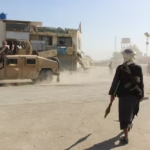The 2020 Doha Agreement between the United States and the Taliban was, at its core, a conditions-based transaction. It stipulated a complete withdrawal of U.S. and NATO forces, an objective the West fulfilled. In exchange, the Taliban made one central, binding commitment:
“to provide guarantees… that will prevent the use of the soil of Afghanistan by any group or individual against the security of the United States and its allies.”
Years after the Taliban’s military takeover, it is clear their adherence to this pledge has not just been weak. It has been systematically and comprehensively violated. This breach is not one failure among many. It is the central, defining failure of the Doha Agreement, proven by the Taliban’s continued harboring of Al-Qaeda, its enabling of a constellation of regional terror groups, and an internally compromised security structure that makes any counter-terrorism promise an impossibility.
The Enduring Al-Qaeda Alliance
The most direct pledge in the agreement was the severance of the Taliban’s decades-long, deeply ideological bond with Al-Qaeda. The Taliban has failed this test completely.
Consistent findings from United Nations Security Council (UNSC) monitoring teams, both before and after August 2021, confirm that the Taliban and Al-Qaeda remain closely aligned and show no indication of breaking ties. Recent UN reports from 2024 and 2025 continue to note heightened concern from member states regarding the group’s presence .
This is not a passive friendship. The relationship has evolved into one of quiet integration. Al-Qaeda members are reportedly embedded within Taliban security structures and acting in advisory roles, providing expertise and training. This demonstrates a complete and willful refusal to fulfill the agreement. The Taliban did not just fail to expel Al-Qaeda. Instead, it welcomed it home and gave it a seat at the table.
Any ambiguity about the Taliban’s intentions was incinerated on July 31, 2022. The smoking gun of the Doha Agreement’s failure was the US drone strike that killed Al-Qaeda’s global leader, Ayman al-Zawahiri.
The critical evidence was not that he was in Afghanistan, but where. Al-Zawahiri was not hiding in a remote, ungoverned mountain cave. He was living comfortably in a safe house in an affluent diplomatic neighborhood in the heart of Kabul. This location, teeming with Taliban security, implies high-level protection, not an intelligence failure.
Furthermore, the safe house was widely reported to be owned by an aide to Sirajuddin Haqqani, the leader of the Haqqani network. Sirajuddin Haqqani is also the Taliban’s acting Interior Minister, the man in charge of the entire country’s domestic security. This fact proves, beyond any reasonable doubt, that the most senior levels of the Taliban’s security apparatus were, at best, fully aware of and, at worst, actively harboring the world’s most wanted terrorist. It was the most blatant and indisputable violation of the Doha pledge imaginable.
Enabling a Terrorist Ecosystem
The Doha pledge was not limited to Al-Qaeda. It was a blanket guarantee to prevent any group from using Afghan soil to threaten other countries. Today, Afghanistan has reverted to its pre-2001 role as a regional hub for destabilization, providing sanctuary to a wide array of groups that threaten its neighbors.
The most glaring example is the Tehrik-e-Taliban Pakistan (TTP). Since the Taliban’s takeover, Pakistan has faced a dramatic and bloody surge in terrorist attacks. July 2024 UN reports explicitly noted increased collaboration and sharing manpower between the Afghan Taliban and the TTP. Pakistan has repeatedly and formally accused the Taliban of providing sanctuary, logistical support, and a permissive environment for the TTP to plan and launch cross-border attacks, leading to direct military clashes between Afghan and Pakistani forces.
But the TTP is not an isolated case. The Taliban’s permissive haven shelters a spectrum of groups:
- Hundreds of fighters from the officially dismantled Islamic Movement of Uzbekistan (IMU) are now reported to be living in Afghanistan, with some elements integrated into Taliban and Al-Qaeda ranks. Alongside Jamaat Ansarullah, these groups pose a direct threat to Tajikistan and Uzbekistan.
- The East Turkestan Islamic Movement (ETIM/TIP), a primary national security concern for Beijing, continues to operate in Afghanistan. Reports indicate the Taliban has merely relocated these fighters away from the Chinese border rather than expelling or dismantling them. This is a tactic of diplomatic management, not counter-terrorism, and remains a clear breach of the agreement.
The Taliban’s response, outright denial, sham mediation efforts, or the token relocation of fighters, demonstrates a consistent unwillingness to honor its guarantee. It is actively allowing its territory to be used for cross-border terrorism.
The Internal Links to ISKP
The Taliban’s sole counter-argument is its public and violent war against its rival, the Islamic State Khorasan Province (ISKP). It often cites this fight as proof of its counter-terrorism credentials.
However, this narrative is severely undermined by the Taliban’s own compromised structure. Credible analysis points to deep, pre-existing links between mid-level Taliban commanders, particularly within the Haqqani network, and ISKP. These connections stem from shared networks, past alliances, and fluid loyalties in Afghanistan’s complex militant landscape.
This means that even as the senior leadership wages a public war against ISKP, their own command structure is internally fractured and unreliable. This makes it impossible for the Taliban to act as a unified counter-terrorism entity. If they cannot be trusted to fight even their own avowed enemies, they cannot possibly be trusted to fulfill a broad guarantee against all terrorist groups.
The Enablers of the Breach
The Taliban’s counter-terrorism failure was not inevitable; it was facilitated by two other core violations of the Doha Agreement’s spirit.
First, the agreement explicitly called for intra-Afghan negotiations to create a political roadmap. The Taliban rejected this path for a full military takeover. This conquest was not just a separate failure. It was a prerequisite for breaking the terror pledge. A negotiated, inclusive government would have contained internal checks and balances. By seizing power by force, the Taliban eliminated all internal opposition and created an ideologically pure Emirate that could provide sanctuary without domestic consequence.
Second, the Taliban’s draconian domestic policies, banning female education, dismantling civil society, and resuming public executions, are not a separate issue. They are proof of an unchanged, rigid extremist ideology. This ideology is the same one shared with Al-Qaeda. This alignment makes a genuine break with them practically impossible, as it would require an ideological revolution. The Taliban’s domestic oppression and its foreign policy (harboring terrorists) are not contradictory. They are two sides of the same ideological coin.
The Doha Agreement hinged on a single, critical linchpin: that Afghanistan would cease to be a terrorist safe haven. The evidence is overwhelming. From the UN reports confirming the Al-Qaeda alliance, to the Zawahiri safe house in Kabul, to the flourishing ecosystem of regional terror groups and the compromised internal links to ISKP, the Taliban has comprehensively and systematically failed to honor its one and only meaningful commitment.






